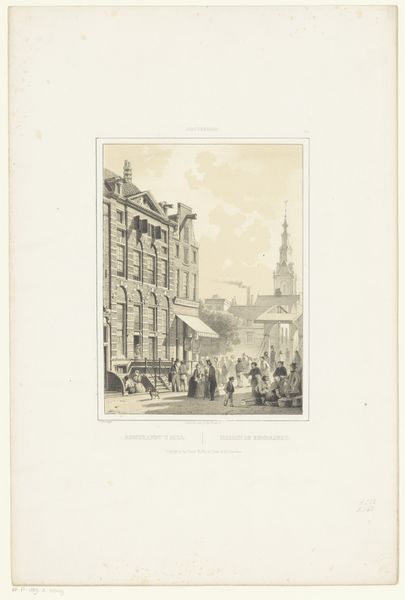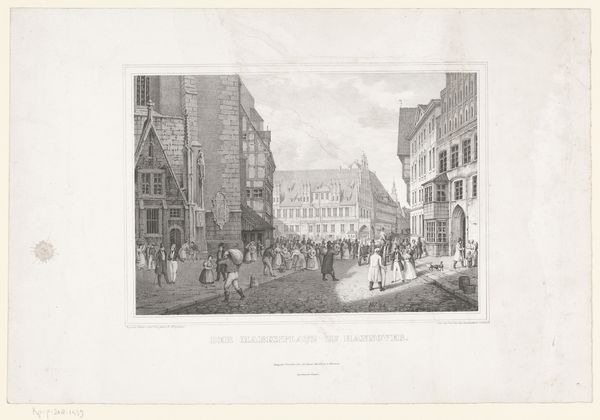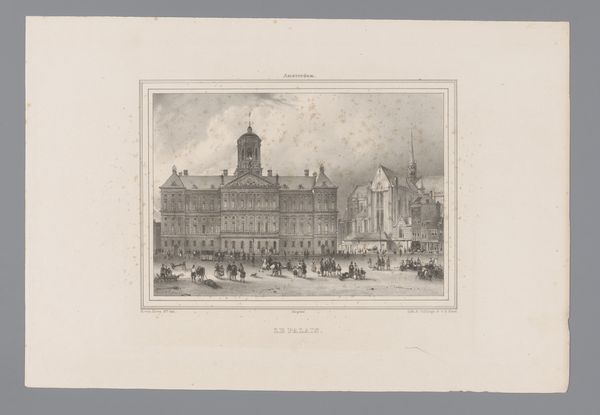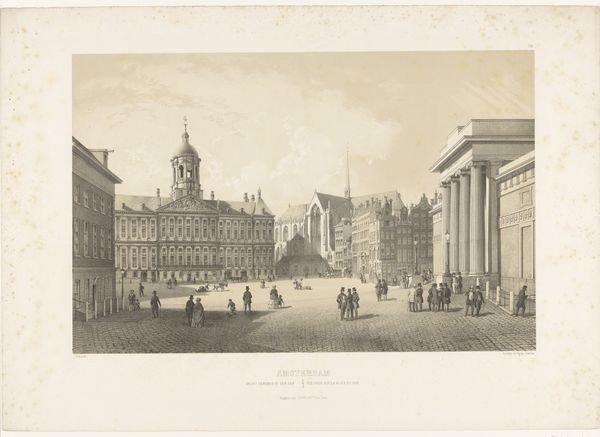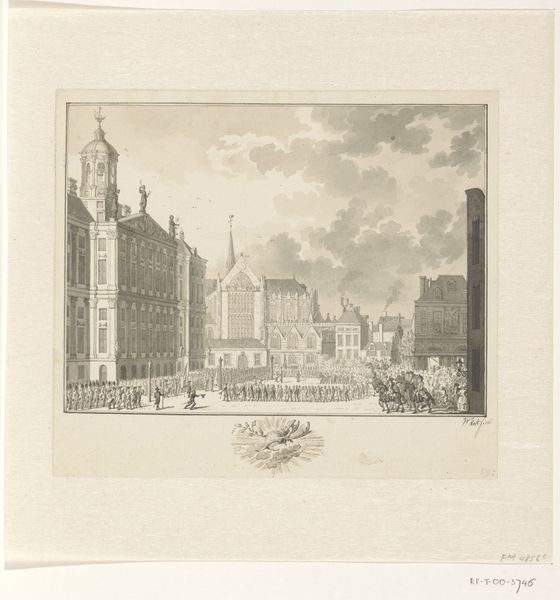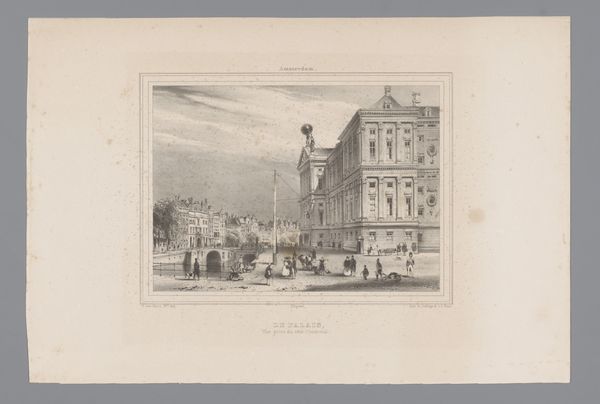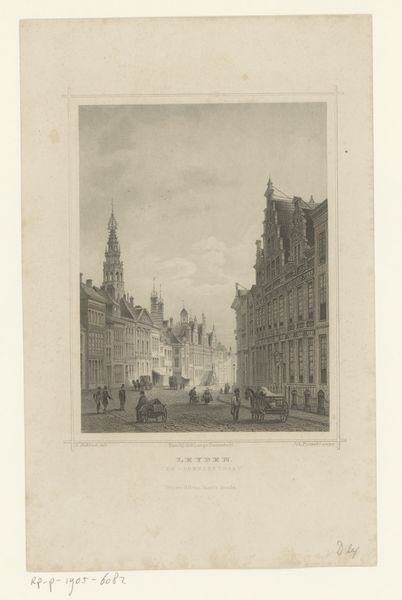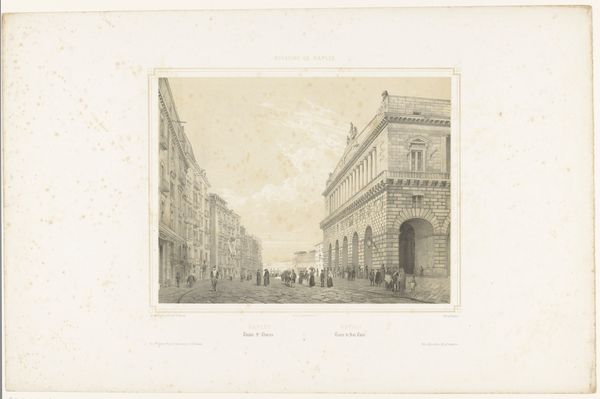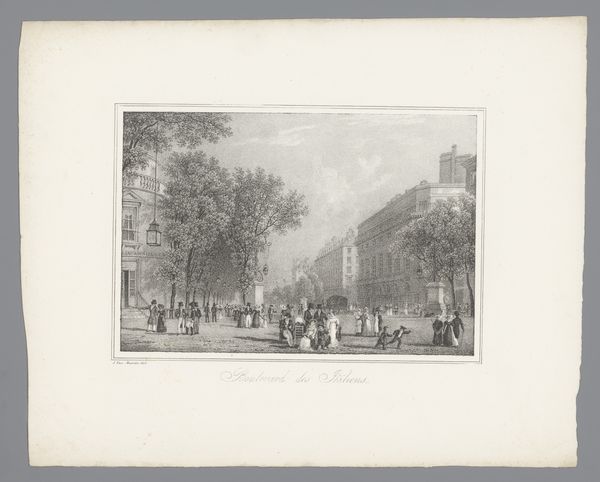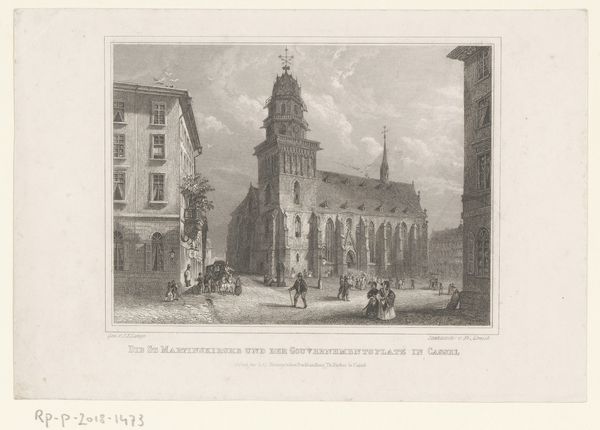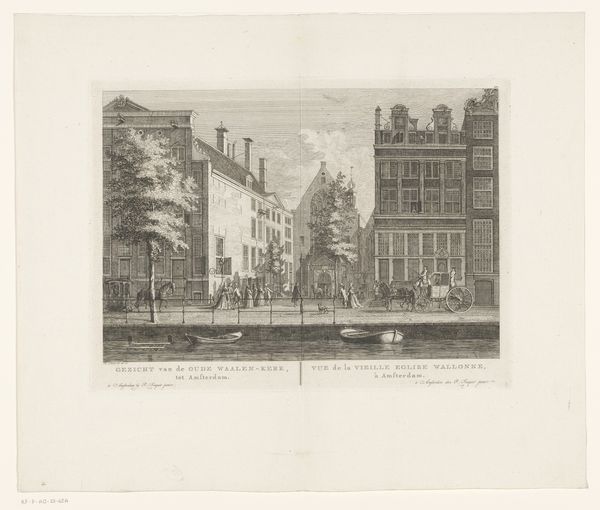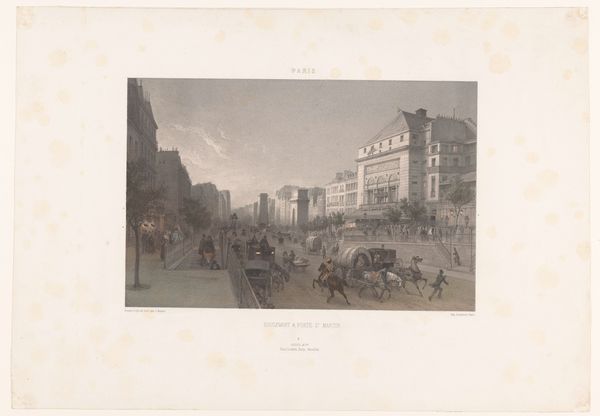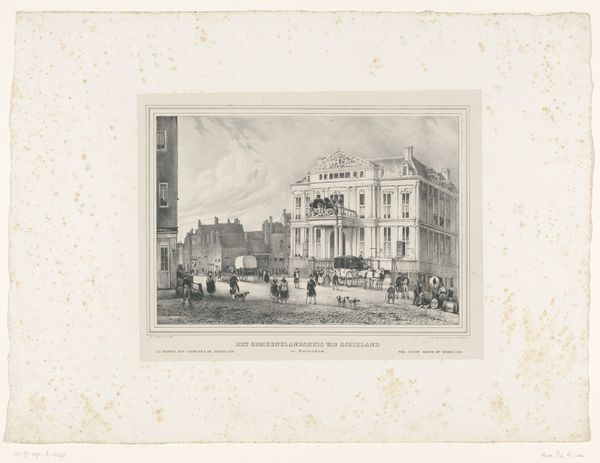
print, etching, engraving
# print
#
etching
#
old engraving style
#
cityscape
#
engraving
#
realism
Dimensions: height 175 mm, width 243 mm
Copyright: Rijks Museum: Open Domain
Curator: What strikes me first is the almost dreamlike quality given to a London street scene through the fine detail of this etching. Editor: And what a street! This is “View of the Royal Exchange, London,” made after 1838 by John Woods, a printed rendering of the late Royal Exchange on Cornhill. Curator: Right, there’s something very precise and even quaint about the way the artist has captured the hustle and bustle. It feels very different from a photograph. More…selective, perhaps. Editor: Indeed. In terms of its historical context, let’s consider the Royal Exchange’s role as a marketplace for global trade, deeply intertwined with Britain’s colonial past. It literally showcases a nexus of wealth accumulation. This piece raises important questions about representation, about who gets to be seen and how. The engraving seems almost celebratory, but let’s think about the stories left out, about who’s benefitting from this financial center. Curator: That’s such an interesting point. It made me think, how Woods created depth in what is such a detailed and very controlled technique—creating shadow by densely working an area, and using space in other areas. What’s there is incredibly intentional. It does invite speculation as to what else could have been depicted! Editor: Right? Whose labor built those buildings? Whose ships brought goods to be traded there? Whose land and resources made it possible? This scene exudes prosperity but the etching medium creates a very delicate impression. A prosperity that history suggests, like a thin sheet of paper, can tear very easily for many involved in its accumulation. Curator: The tower almost piercing the clouds really gives this that sense of the architecture aspiring to something beyond itself, whether earthly or divine. What I really adore are the small details of life captured; look at those people milling about the foreground as though captured at a candid, rather than staged, moment. Editor: Yes, and how do we interpret their placement? There’s certainly an argument to be made for how the arrangement of figures relates to visibility and power, suggesting the public spectacle of finance reinforces very specific social and economic hierarchies. Curator: A print like this is a document of a particular way of seeing, literally and ideologically. What it reveals about that time, and about our own ways of looking at it now is quite thought provoking. Editor: Absolutely. And how we, now, can question our own position in relation to the structures of power depicted within.
Comments
No comments
Be the first to comment and join the conversation on the ultimate creative platform.
